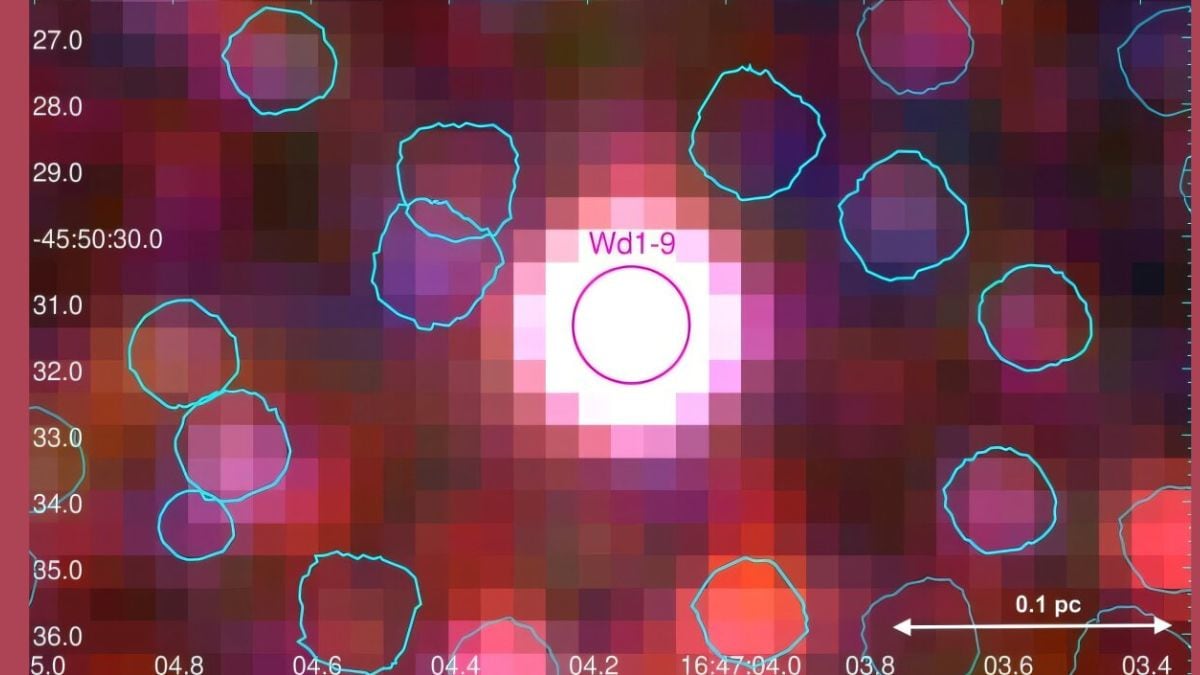
Within the newest version of the scientific investigations, it has come to mild that the Chandra X-Ray Observatory of NASA has been employed by a global group of astronomers to research a supergiant star known as Wd1-9. It has actually carried out an in depth investigation, which was accompanied by in-depth evaluation and supplied important insights. Contemplating the supergiant B Stars, these are fairly uncommon within the Milky Approach. As these stars develop, they bear steady adjustments. These stars additionally exhibit robust Balmore emission traces, forbidden traces, and infrared extra.
Wd1-9: What is that this Supergiant B Star?
Wd1-9 is a supergiant B (e) star in Westerlund 1. It’s situated at a distance of 13,800 mild years from Earth. This star is the brightest radio supply current throughout the cluster. Likewise, the latest findings introduced within the paper printed on July twenty third, 2025, counsel that this star shows a wealthy emission-line spectrum. Considerably, no photospheric options had been detected.
Though Wd1-9 has been studied a number of instances at completely different wavelengths, its true nature remains to be unknown on account of it being lined by a cloud of mud. Because the earlier analysis suggests, this star could also be a cool hypergiant or an interacting binary system. Now, to beat these suspicions, Konstantina Anastasopolou led a group of the Harvard-Smithsonian Middle for Astrophysics (CfA), Cambridge, employed Chandra to dig deeper.
What did the Astronomers Discover?
As per the observations supplied by Chandra, it was witnessed that Wd1-9 reveals long-term X-ray variability. The group additional recognized an orbital interval that comprised a 14-day periodic sign. In keeping with the astronomers, that is the primary interval dedication for the Wd1-9.
Considerably, the astronomers discovered that robust emission traces had been detected that surfaced from parts like silicon, sulfur, and argon. Equally, the iron emission line at 6.7 keV was recognized for the primary time ever. These identifications have change into part of the brand new findings.
To Conclude
In keeping with the astronomers, the above-specified findings immediately relate to binarity. The spectrum of Wd1-9 resembles the Wolf-Rayet (WR) binaries in Westerlund 1. Additionally, when the astronomers examined the X-Ray color-color diagrams, they recognized that Wd1-9 showcased variations in thermal temperatures. After analysing the findings and placing all of the examinations collectively, the scientists concluded that Wd1-9 is part of the binary system.
